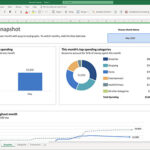The world of finance relies on a universal language of symbols, and among the most recognized is the Symbol Money Sign. From the dollar to the yen, these characters are more than just typographic elements; they represent economies, trade, and global commerce. Understanding how to use and access these symbols is essential in today’s digital and financial landscape. This guide will delve into the most prominent money symbol – the dollar sign ($) – and explore how to easily type it across different platforms and operating systems, enhancing your content creation and financial literacy.
Typing the Dollar Sign: A Comprehensive Guide
The dollar sign ($) is arguably the most iconic symbol money sign globally, representing the United States dollar and numerous other currencies worldwide. Whether you’re drafting financial reports, managing your budget, or simply communicating prices online, knowing how to quickly input this symbol is crucial. Here are several methods to type the dollar sign, ensuring you’re covered regardless of your device or operating system.
Method 1: The Shift + 4 Shortcut
The simplest and most universal method to type the dollar sign ($) is using a keyboard shortcut.
- For Windows and MacOS: Simultaneously press the Shift key and the number 4 key on your keyboard. This shortcut is consistent across most keyboard layouts and applications, making it the quickest way to insert the dollar sign.
Method 2: Utilizing Alt Codes for the Dollar Sign on Windows
For users working on Windows operating systems, Alt codes provide an alternative method to type a variety of symbols, including the dollar sign. This method is particularly useful for symbols that don’t have a direct key on your keyboard.
- Enable Num Lock: Ensure that the Num Lock key on your keyboard is activated. This is usually indicated by a light on your keyboard’s number pad section.
- Press and Hold Alt Key: Press and hold down the Alt key on the left side of your keyboard.
- Enter Alt Code: While holding the Alt key, type the number 36 using the numeric keypad on the right side of your keyboard.
- Release Alt Key: Release the Alt key. The dollar sign ($) will appear in your document or text field.
Note: Alt codes are specific to Windows operating systems and will not work on MacOS.
Method 3: Typing the Dollar Sign on MacOS
Mac users also have a straightforward keyboard shortcut to type the dollar sign:
- For MacOS: Similar to Windows, press and hold the Shift key and then press the number 4 key. This combination will instantly produce the dollar sign ($).
Alternatively, on some Mac keyboards, you might find the dollar sign accessible via the Option key:
- Option + 4: Press and hold the Option (⌥) key (also sometimes labeled as ‘Alt’) and then press the number 4 key.
Unicode and HTML Representations of Money Symbols
Beyond keyboard shortcuts and Alt codes, understanding Unicode and HTML representations of money symbols is valuable, especially for web content creators and developers. Unicode is a universal character encoding standard that assigns a unique number to each character, symbol, and emoji, ensuring consistent display across different platforms and languages.
Here’s a table showcasing various dollar sign representations and related money symbols along with their Unicode values and HTML codes:
| Symbol/Emoji | Description | Unicode Hex | HTML Decimal Code |
|---|---|---|---|
| $ | Dollar Sign | U+0024 | $ |
| ﹩ | Small Dollar Sign | U+FE69 | ﹩ |
| $ | Fullwidth Dollar Sign | U+FF04 | $ |
| 💲 | Heavy Dollar Sign | U+1F4B2 | 💲 |
| 💵 | Dollar Banknote | U+1F4B5 | 💵 |
| 💰 | Money Bag | U+1F4B0 | 💰 |
| 💸 | Money With Wings | U+1F4B8 | 💸 |
| 💱 | Currency Exchange | U+1F4B1 | 💱 |
| 🤑 | Money-Mouth Face | U+1F911 | 🤑 |
These Unicode values can be used in HTML and other programming languages to display the respective money symbols. For example, using $ in HTML will render the standard dollar sign ($). Similarly, you can copy and paste these symbols and emojis into social media, blogs, and other digital platforms to visually represent currency and financial concepts.
The Global Significance of Money Symbols
Money symbols are more than just characters; they are powerful visual representations of economic value and international trade. The dollar sign, in particular, is globally recognized and associated with financial transactions, economic stability, and commerce. Its widespread use underscores the dominance of the US dollar in international finance.
However, the world of currency symbols is diverse. The British Pound (£), the Euro (€), and the Japanese Yen (¥) are other examples of instantly recognizable symbols that represent major world economies. Each symbol carries its own historical and cultural significance, reflecting the unique economic identities of the nations they represent.
Understanding and correctly using these symbol money signs is crucial for clear communication in finance, business, and everyday contexts. Whether you’re a content creator, a financial professional, or simply managing your personal finances, mastering the input and usage of money symbols like the dollar sign enhances your digital literacy and financial fluency.
